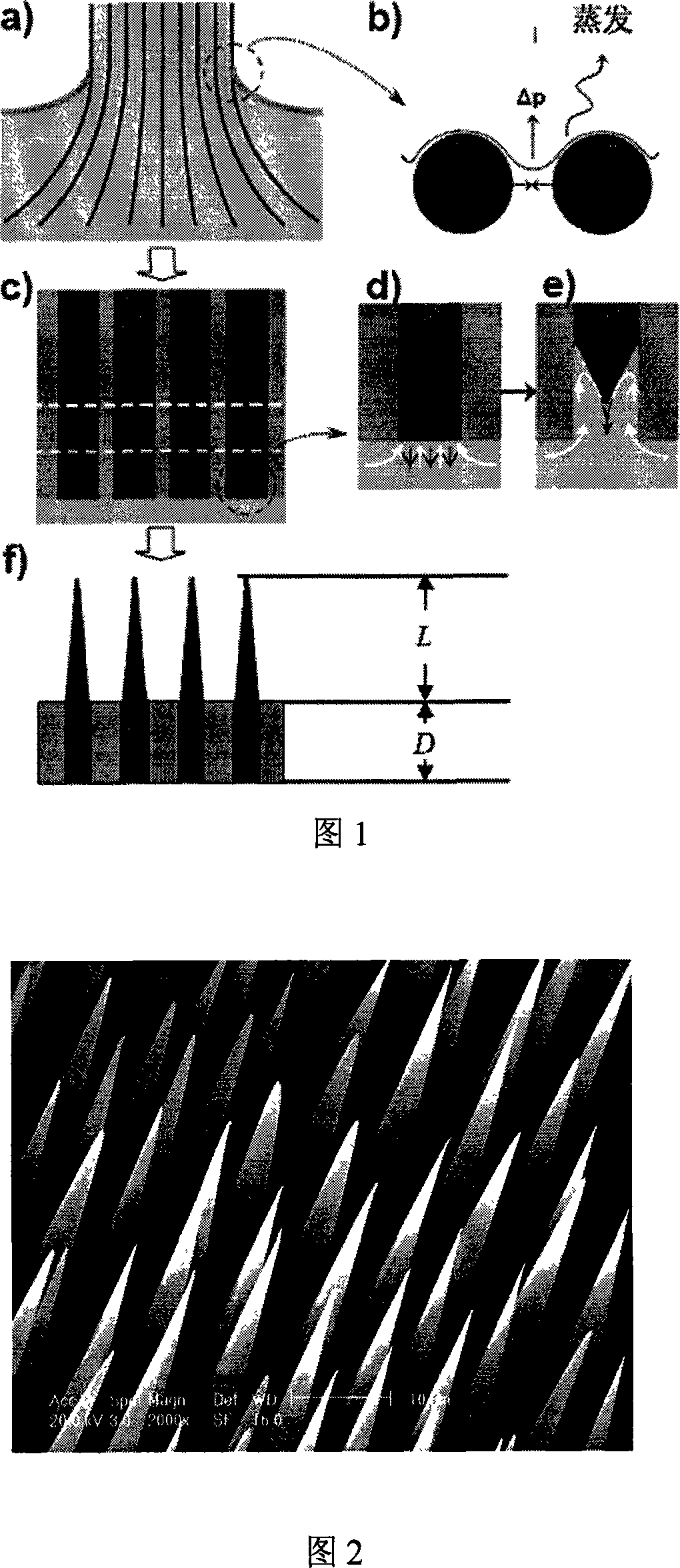Method for preparing micrometer and submicron probe arrays
A submicron, needle array technology, applied in the field of preparation of nano- and micro-structured materials, can solve problems such as limiting the application field and scope, and achieve the effects of short preparation cycle, simple operation, and reduced preparation cost
- Summary
- Abstract
- Description
- Claims
- Application Information
AI Technical Summary
Problems solved by technology
Method used
Image
Examples
Embodiment 1
[0020] Example 1: SiO with a diameter of 8 microns 2 Fiber obtains SiO through self-assembly technology 2 Fiber bundle; then put it into the MMA (polymethyl methacrylate) solution with BPO, place it in a water bath and heat it at 60℃ for 24h to solidify the polymer, SiO 2 The volume ratio of the fiber bundle to the polymer cured product is 0.1; then, it is cut into slices with a thickness of 1 mm, and then corroded with a 40% HF acid solution at a constant temperature of 30°C for 5 minutes, ultrasonically cleaned with deionized water, and dried to obtain a nanoneedle array.
Embodiment 2
[0021] Example 2: SiO with a diameter of 8 microns 2 Fiber obtains SiO through self-assembly technology 2 The fiber bundle; then put it into the styrene solution added with hexamethyleneimine lithium, and heat it in a water bath at 60℃ for 24h to solidify the polymer; SiO 2 The volume ratio of the fiber bundle to the polymer cured product is 0.3; then it is cut into slices with a thickness of 3mm; it is corroded with a 20% HF acid solution at a constant temperature of 30°C for 30 minutes, ultrasonically cleaned with deionized water, and dried to obtain a nanoneedle array;
Embodiment 3
[0022] Example 3: SiO2 fibers with a diameter of 8 microns are obtained by self-assembly technology 2 Fiber bundle; then immerse it in the molten resin at 120℃, and cool the slice after filling, SiO 2 The volume ratio of the fiber bundle to the polymer cured product is 0.6; the slice thickness is 1cm; it is etched with 40% HF acid solution for 10 minutes at a constant temperature of 40°C, and then cleaned with deionized water ultrasonically. After drying, the nanoneedle array can be obtained, as shown in Figure 2.
PUM
| Property | Measurement | Unit |
|---|---|---|
| diameter | aaaaa | aaaaa |
| thickness | aaaaa | aaaaa |
| diameter | aaaaa | aaaaa |
Abstract
Description
Claims
Application Information
 Login to View More
Login to View More - Generate Ideas
- Intellectual Property
- Life Sciences
- Materials
- Tech Scout
- Unparalleled Data Quality
- Higher Quality Content
- 60% Fewer Hallucinations
Browse by: Latest US Patents, China's latest patents, Technical Efficacy Thesaurus, Application Domain, Technology Topic, Popular Technical Reports.
© 2025 PatSnap. All rights reserved.Legal|Privacy policy|Modern Slavery Act Transparency Statement|Sitemap|About US| Contact US: help@patsnap.com

